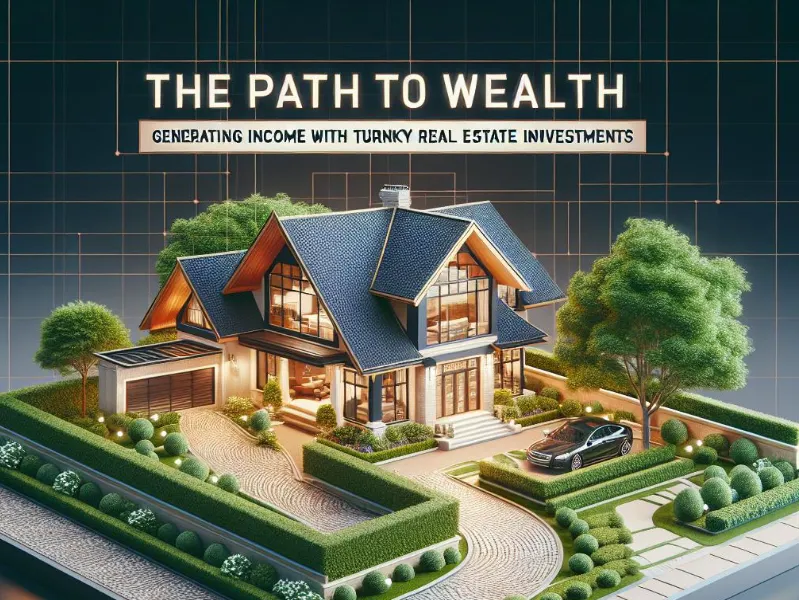Demographic Trends Shaping the Future of Real Estate Investment

Introduction
In a world of constant change, few industries are as influenced by social dynamics as real estate. Investors looking to gain an edge must understand that demographic trends don’t just dictate housing preferences—they can define entire markets.
As we examine the evolving landscape, we will see how shifts in age, work habits, and lifestyle preferences are laying down the foundation for future real estate investment opportunities.
The Power of Millennial Buyers
It’s hard to overstate the impact Millennials have had on the housing market. According to the National Association of Realtors, over 38% of homebuyers in 2022 were Millennials.
With an increasing desire for homeownership, they are shifting what constitutes “ideal housing.”
- Key Benefit: Investors can target entry-level homes, offering a reliable return as this demographic increases its buying power.
Case Study: Sarah’s First Investment
Sarah, a 29-year-old marketing manager from Austin, Texas, decided to invest in a duplex after years of renting.
She was drawn to properties with modern amenities and proximity to her workplace.
By choosing a neighborhood where Millennial demand was robust, Sarah was able to successfully rent out the other unit, generating passive income while also seeing property appreciation.
Generation Z Enters the Market
As the first cohort to grow up completely immersed in technology, Generation Z is changing the game even before they fully enter the home-buying market.
With a focus on sustainability and experience over material wealth, their housing preferences lean toward eco-friendly features and urban locations.
- Key Benefit: Investors who incorporate green technology in their properties may find themselves ahead of the curve as Gen Z renters prioritize sustainability.
Case Study: Building for Tomorrow
In Portland, Oregon, a local developer named Ben has begun focusing on eco-friendly apartments targeting Gen Z tenants.
His innovative approach included using repurposed materials and incorporating community gardens into his properties.
As a result, Ben has seen a significant uptick in occupancy rates and tenant satisfaction.
The Baby Boomer Shift
The Baby Boomer generation is beginning to downsize, trading their family homes for smaller, more manageable spaces.
This shift opens up a wealth of opportunities for investors who focus on single-story homes or communities catering to active adult lifestyles.
- Key Benefit: Targeting Baby Boomers can provide steady rental income, particularly in age-restricted communities.
Case Study: Linda’s Downsizing Dilemma
Linda, a 65-year-old retiree in Florida, decided to sell her larger family home and move into a gated community designed for active seniors.
She worked with an investor who specializes in redeveloping properties in older neighborhoods, where she found a smaller unit with amenities that matched her lifestyle.
This trend helps the investor reallocate under-utilized properties effectively.
Urban vs. Suburban Living
The pandemic ignited a shift in where people choose to live.
With remote work becoming mainstream, many have opted for suburban homes that offer more space.
This has led to a surge in suburban development, as well as a reevaluation of urban spaces.
- Key Benefit: Investors can find lucrative opportunities in suburban areas where demand has surged for single-family homes with yards.
Case Study: Tim’s Suburban Strategy
Tim, an investor from Philadelphia, capitalized on this suburban shift by purchasing homes on the outskirts of the city.
By focusing on family-friendly neighborhoods with good school districts, he was able to turn a quick profit as more families fled urban areas for spacious homes.
The Remote Work Influence
The increase in remote work has led to a significant change in how and where people want to live.
The desire for more space and comfort has shifted priorities, affecting rental markets and homebuying preferences.
- Key Benefit: Investors can target multi-family units in quieter areas, appealing to remote workers seeking a more balanced lifestyle.
Case Study: Jessica’s Vacation Rental Venture
Jessica, who lives in Asheville, North Carolina, turned her second home into a vacation rental.
With remote workers looking for quiet escapes, her property has become a sought-after destination.
By focusing on creating a comfortable workspace, she can attract longer-term rentals during off-peak seasons.
The Affordable Housing Crisis

As prices in many markets soar, the affordable housing crisis continues to be a pressing issue.
Investors who can develop properties targeting low- to mid-income families can create significant community impact while also securing steady income.
- Key Benefit: Investors participating in affordable housing projects may benefit from government incentives and reduced competition.
Case Study: James’ Community Focus
James, a social entrepreneur in Detroit, identified an underserved community needing affordable housing.
By securing federal and state grants, he was able to transform a dilapidated neighborhood into a vibrant community.
His model demonstrates that good investments don’t just yield profit; they also enhance community well-being.
The Technology Factor
Proptech is revolutionizing how real estate operates.
From virtual showings to AI in property management, technology is paving the way for more efficient transactions and tenant management.
- Key Benefit: Investors can enhance their operational efficiency through technology, making properties more attractive to tenants.
Case Study: Kim’s Tech-Driven Approach
Kim, a property manager in California, integrated smart home technology into her rental properties.
With features like smart thermostats and security systems, she not only attracted tech-savvy tenants but also reduced her operational costs, as the technology provided greater control over utilities.
The Generational Housing Gap
The generational housing gap refers to the disparity in homeownership rates between older and younger generations.
This creates an interesting dichotomy, as Millennials and Gen Z are grappling with high prices while Baby Boomers hold a significant portion of equity in their homes.
- Key Benefit: Understanding this gap allows investors to strategize, positioning themselves to meet the needs of both home buyers and renters.
Case Study: Mark’s Bridging Solution
Mark, a real estate developer in Ohio, built intergenerational living communities, where younger families could rent from older homeowners seeking companionship.
This innovative solution not only filled a housing need but also fostered community engagement.
Conclusion
The landscape of real estate investment is undoubtedly complex, yet it holds immense potential for those willing to adapt to the shifting tides of demographic trends.
Whether you’re drawn to urban spaces or suburban homes, luxury rentals or affordable housing, understanding these dynamics is key to leveraging opportunities in this ever-changing market.
Investors must keep their fingers on the pulse of these trends to not only thrive in their endeavors but also create meaningful impacts on the communities they serve.
By embracing these shifts, the future of real estate investment remains vibrant and full of promise. Embrace the change, seize the opportunity, and transform your approach to real estate investing today!































